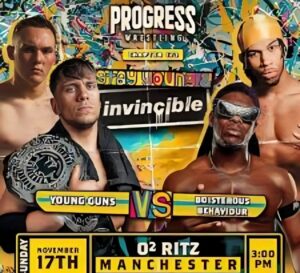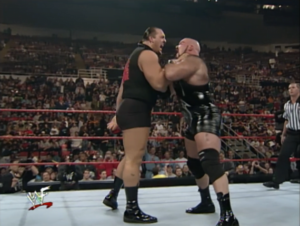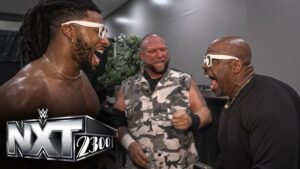Professional wrestling is full of tragic stories of wrestlers with great promise who have died far too young – David Von Erich, Gino Hernandez, Owen Hart, and many more have seen their careers cut short due to accidental death. But for most, they had at least reached a level of national prominence that fans around the world are well versed in their accomplishments despite their premature passing. For Portland, Oregon’s Art Barr, his star was hitting its peak and he was on the verge of becoming an international superstar when he passed away in 1994 at the age of 28.

Art Barr was a second-generation wrestler, born into the industry. His father, Sandy Barr, had a lengthy career in Don Owen‘s Pacific Northwest Wrestling territory from the 1960s to 1990s, taking over the company in 1992. Art’s older brother, Jesse Barr, was a regular worker with NWA territories like Championship Wrestling From Florida, Mid South Wrestling, and Georgia Championship Wrestling, as well as Jerry Jarrett and Jerry Lawler‘s Continental Wrestling Association in Memphis. He even had a run with the WWF from 1986 to 1987 as Jimmy Jack Funk, the third Funk “brother” to Dory Jr. (Hoss) and Terry Funk. In 1987, after training with his father and brother, Art Barr made his own debut with Pacific Northwest Wrestling.
Art Barr began his rise slowly, working his way into his own path with Pacific Northwest Wrestling before Roddy Piper suggested in 1989 that he create a character based on Michael Keaton‘s character in the 1988 film Beetlejuice. The result was someone who looked more like current indie star Danhausen than Keaton’s iconic role, but it proved to be popular in the Pacific Northwest.
In 1990, Art Barr would get signed to World Championship Wrestling (WCW), reprising his Beetlejuice character from the Pacific Northwest. Now called The Juicer (to avoid copyright issues), he debuted on WCW television that September in a victory over Bill Ford. But unfortunately, at 6’1″ and 240 lbs., Barr was still considered “too small” by major promoters, and WCW’s Ole Anderson was no exception. Following a tag team match in early 1991, where he paired with Norman the Lunatic (later Bastion Booger in WWF), he was released from the company.
But despite a failed run with WCW, it ended up being a move that would change his career forever. During his time with WCW, he met Konnan, one of the top stars in Mexico, who had appeared for WCW at Starrcade ’90 as part of the Pat O’Connor International Tag Team Tournament, where he was partnered with Rey Mysterio Jr. Upon Konnan’s recommendation, Art Barr would take his talents down to Mexico. He would join Konnan in Consejo Mundial De Lucha Libre (CMLL) that fall as the masked luchador, The American Love Machine. It was in Mexico that Art Barr finally found superstardom. While he was a bit player in his native United States, he became one of CMLL’s top stars. His máscara contra máscara (mask vs. mask) match against rival Blue Panther drew 18,000 fans to Arena Mexico to witness the Love Machine lose his beloved mask – another 8,000 fans crammed the parking lot to watch on a big television screen.
https://www.youtube.com/watch?v=WzBu_ps7UjM
In 1992, Art Barr was one of many CMLL talents, including Konnan, who jumped ship to a new rival promotion, Asistencia Asesoría y Administración (AAA), where he became simply “The Love Machine” Art Barr. A few months later, paired with another CMLL defector in Eddie Guerrero, and the two were paired together in La Pareja del Terror (The Pair of Terror). The two would begin a famous rivalry with El Hijo del Santo & Octagon over the AAA World Tag Team titles. Soon the duo was so popular that AAA decided to build a stable around the two. Called Los Gringos Locos, they were soon joined by Konnan, Black Cat, El Misterioso, Chicano Power, and Madonna’s Boyfriend (Louie Spicolli). In July of 1994, Barr and Guerrero would finally win the AAA World Tag Team Championships.

In June of 1994, Art Barr would debut with New Japan Pro Wrestling (NJPW), touring for two months with the company alongside Los Gringos Locos member Black Cat as well as Eddie Guerrero, who had been competing under a mask as Black Tiger II since 1993. Competing as American Machine under a mask, Barr quickly got the attention of Japanese fans and wrestlers alike, including Jushin Thunder Liger. Liger had approached NJPW management about having a lengthy feud with Barr heading into the January 4, 1995 SuperShow at Tokyo Dome for a match for the IWGP Junior Heavyweight Championship. The program was postponed when Liger broke his ankle, and sadly never materialized at all due to the tragedy that was just around the corner.

The pairing of Guerrero and Barr was not only packing houses across Mexico for AAA, but was gaining attention beyond Mexico’s borders. The WWF and WCW both now had the tag team on their radar for possible signing, but it was Paul Heyman and his new Extreme Championship Wrestling (ECW) who would become the destination that both were set on. During an interview surrounding AAA’s When Worlds Collide in November of 1994, Barr stated that “(ECW is) not the biggest promotion but they’re the hottest and a very forward-thinking promotion”. On November 6, 1994, at AAA’s When Worlds Collide PPV in Los Angeles, California, Barr and Guerrero would face their longtime rivals Octagon & El Hijo del Santo in a hair vs. mask match that many consider one of the greatest lucha libre contests in wrestling history. What Art Barr considered to be his “coming out” party to American promoters who long thought he was too small to be effective, it would sadly prove to be his final match. Less than three weeks later, on November 23, 1994, Art Barr was found dead in his house from a drug-related heart attack.

The Love Machine Art Barr With The Original Frog Splash In Slow Motion! pic.twitter.com/A6qWPkNFQO
— GrappleClips (@GrappleClips) May 17, 2020
Fuelled by a dog determination to prove that smaller men had a place in professional wrestling, Art Barr pushed himself above and beyond his own skill level, with a charisma that infected everyone around him, fan and wrestler alike. “We knew our roles and accepted them,” Guerrero recalled to Canoe Sports. “He knew I was the workhorse and I knew he had the charisma and life of the tag team.” Sadly, Art Barr’s star shone too quickly and after only seven years in the business, it would burn out. Loneliness from being away from his wife and son in Portland while competing in Mexico and Japan would only increase Art Barr’s wildlife, with alcohol and drugs becoming his usual distraction from his homesickness. Art Barr’s influence would be seen in multiple promotions following his death, including the World Champion career of his partner, Eddie Guerrero, but many fans and peers often wonder just how big Barr would have been had he lived. “I think if he was still alive today he would be one of the top guys in the business,” Chris Jericho told Canoe Sports in 1999. “He had such good personality and the ability to piss people off.”
Stay tuned to the Last Word on Pro Wrestling for more on this and other stories from around the world of wrestling, as they develop. You can always count on LWOPW to be on top of the major news in the wrestling world, as well as to provide you with analysis, previews, videos, interviews, and editorials on the wrestling world.





![The Rock Says... Too Much: Overshares in GQ and The Rise of All Access Fans [Photo Cred: GQ/Eli Russell Linnetz]](https://lastwordonsports.com/prowrestling/wp-content/uploads/sites/15/2024/11/gq_dwayne-johnson-gqs-men-of-the-year-interview-300x169.jpg)
